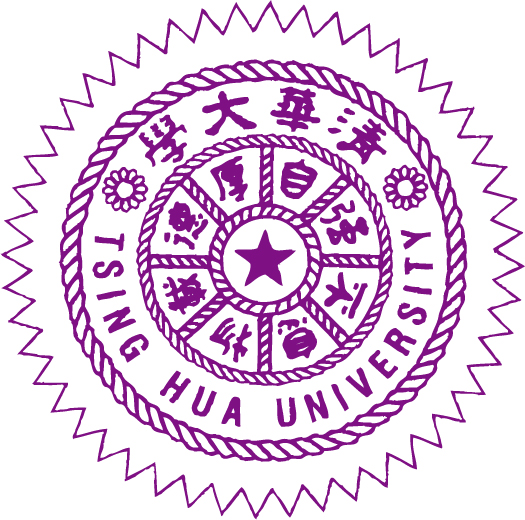Environmental Chemistry and Catalysis Lab
Research Field
Prof. Doong is currently the Chair professor at the Institute of Analytical and Environmental Sciences, National Tsing Hua University (NTHU), Taiwan. He is also the Dean of Tsing Hua International College. Prof. Doong is internationally known for his research in environmental nanotechnology, energy materials, and biosensors/nanosensing devices. Prof. Doong has published over 200 papers with 12,900+ citations and h-index of 67. He has received many awards and honors for his contribution to research and teaching in environmental engineering and science. He received the International Honorable Member Award from the American Academy of Environmental Engineers and Scientists in 2016 and was a Fellow of the International Association of Advanced Materials (IAAM) in 2020 for his worthy and sustained contributions to the advancement of environmental nanotechnology. More recently, his research moves to the water-energy nexus and net zero emission. The application of circular economy, especially the reuse and recycling of biomass and agricultural wastes, for the fabrication of high-valued biochars/nanomaterials for PEC research is also addressed.
The Environmental Chemistry and Catalysis Laboratory (ECCL) focuses on the fabrication of novel environmentally benign nanomaterials and nano(photo)catalysts for energy and environmental application. The major goal of the ECCL is to develop cutting-edge technology for understanding the fundamentals of environmental processes of chemicals/contaminants at the solid-liquid interfaces as well as the possible reaction mechanisms for transformation. The development of green energy and/or green technology for environmental and energy applications is also one of the major research works in ECCL, especially the water-energy nexus. Currently, the development of low-dimensional nanomaterials like 0-D graphene quantum dot, 1-d nanofibers/ nanotubes, 2-D g-C3N4, TMD, and MXene for photoelectrochemical (PEC) reactions for photocatalysis, water splitting and CO2 reduction is the main work in the lab.
1.. V. D. Dien, T. Annadurai, A. P. Khedulkar, J. Y. Lin, J. Adorna Jr, W. J. Yu, B. Pandit, T. V. Huynh, R. A. Doong*, S-scheme N-doped carbon dots anchored g-C3N4/Fe2O3 shell/core composite for photoelectrocatalytic trimethoprim degradation and water splitting, Appl. Catal. B. Environ. 320 (2023) 121928.
2. T. H. Wang, M. J. Chen, Y. J. S. Lai, R. A. Doong, P. Westerhoff, B. Rittmann, High-efficiency photocatalytic H2O2 production in a dual optical– and membrane–fiber system, ACS Sustain. Chem. Eng. 11 (2023) 6465-6473.
3. M. D. Nguyen, T. B. Nguyen, L. H. Tran, T. G. Nguyen, I. Fatimah, E. P. Kuncoro, R. A. Doong*, Z-scheme S, B co-doped g-C3N4 nanotube@MnO2 heterojunction with visible-light-responsive for enhanced photodegradation of diclofenac by peroxymonosulfate activation, Chem. Eng. J. 452 (2023) 139249.
4. A. P. Khedulkar, V. D. Dang, B. Pandit, T. A. N. Bui, H. L. Tran, R. A. Doong*, Flower-like nickel hydroxide@tea leaf-derived biochar composite for high-performance supercapacitor application. J. Colloid Interface Sci. 623 (2022) 845-855.
5. V. D. Dang, J. Adorna Jr, T. Annadurai, T. A. N. Bui, H. L. Tran, L. Y. Lin, R. A. Doong*, Indirect Z-scheme nitrogen-doped carbon dot decorated Bi2MoO6/g-C3N4 photocatalyst for enhanced visible-light-driven degradation of ciprofloxacin. Chem. Eng. J. 422 (2021) 130103.
6. A. N. Oliveros, J. A. I. Pimentel, M. D. G. de Luna*, S. Garcia-Segura, R. R. M. Abarca, R. A. Doong*, Visible-light photocatalytic diclofenac removal by tunable vanadium pentoxide/ boron-doped graphitic carbon nitride composite. Chem. Eng. J. 403 (2021) 126213.
7. E. R. Halabaso, J. W. L. Salvacion, E. P. Kuncoro, R. A. Doong*, Highly efficient capacitive deionization of brackish water with manganese vanadate nanorod decorated reduced graphene oxide electrode. Environ. Sci. Nano 8 (2021) 2844-2854.
8. T. B. Nguyen, C. P. Huang, R. A. Doong*, Enhanced catalytic reduction of nitrophenols by sodium borohydride over highly recyclable Au@graphitic carbon nitride nanocomposites. Appl. Catal. B Environ. 240 (2019) 337-347.
(1) Environmental Nanotechnology for Energy-Saving Water and Wastewater Treatment
(2) Water-Energy Nexus
(3) Energy Materials for Energy Storage.
(4) Photoelectrochemistry
(5) Biosensors and Nanosensing technology
- 2024 TECO Award
- 2022 Y. Z. Hsu Science Chair Professor in the Green Science and Technology Category, Far Eastern Y.Z. Hsu Science and Technology Memorial Foundation.
- 2020-2022 Fellow of International Association of Advanced Materials (FIAAM)
- 2020 The World Top 2% Scientists (Environmental Science)
- 2019 Ho Chin Tui Outstanding Award in the Environmental Protection Category.
- 2018 Y. Z. Hsu Science Paper Award in the Green Science and Technology Category, Far Eastern Y.Z. Hsu Science and Technology Memorial Foundation.
- 2016 International Honorable Member Award of "American Academy of Environmental Engineers and Scientists"
- 2015 Outstanding Research Award, Ministry of Science and Technology, Taiwan.
- 2006-2012 Faculty Excellence in Research Award, National Tsing Hua Univeristy
- 2008 Outstanding Research Award, National Science Council, Taiwan.
- 2006 Most cited paper of J. Chromatography A (Title: Determination of organochlorine pesticides and their metabolites in soil samples using headspace solid-phase microextraction)
- 2005 Best Conference Paper Award, 2005 Annual Conference on Soil and Groundwater Contamination, Taiwan.
- 2005 Excellence in Teaching Award, National Tsing Hua University, Taiwan.
- 2003 Dr. Wu Da-Yu Memorial Award, National Science Council, Taiwan.
- 2000 Humbolditian, Alexander von Humboldt Foundation, Germany.
Ph.D. in Environmental Engineering, National Taiwan University, Taiwan
B.S. in Environmental Engineering, National Chung Hsing University, Taiwan
2 Vacancies
Job Description
To fabricate MXene and/or MOF-metal oxide nanocomposites for environmental, energy and sensing applications.
Preferred Intern Education Level
Bachelor, Master and Ph.D. students. Should have background knowledge in Environmental and Chemical Engineering.
Skill sets or Qualities
Prefer to have experience in lab work, especially to conduct a special topic on research work.
